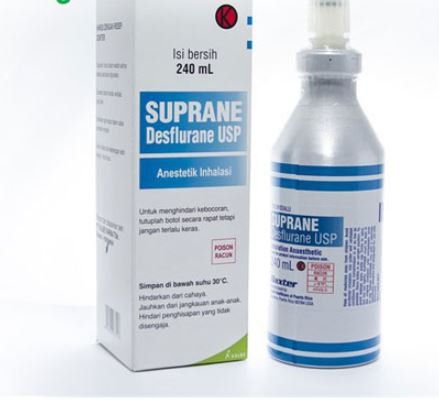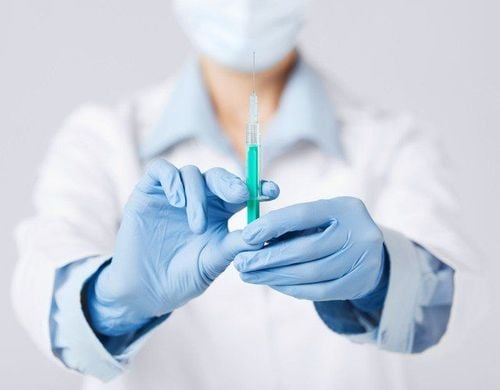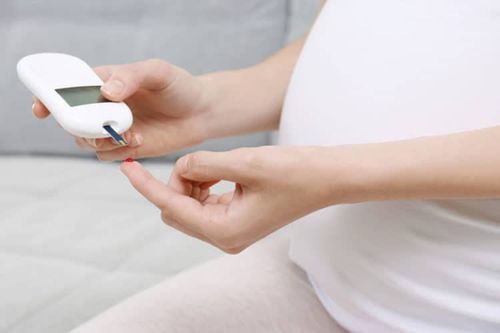This is an automatically translated article.
The article is expertly consulted by Master, Doctor Ton That Quang - Head of Anesthesia - Anesthesia Unit - Department of General Surgery - Vinmec Nha Trang International General Hospital.Diagnostic hysteroscopy is a modern method to help diagnose diseases of the uterus. This method is performed by specialists under general anesthesia.
1. What is hysteroscopy under anesthesia?
Diagnostic hysteroscopy is a subclinical method that helps diagnose abnormalities in the uterine cavity by inserting a laparoscope with a camera into the uterine cavity to record abnormal images in this organ.Diagnostic hysteroscopy performed with anesthesia technique by intubation and the use of anesthetic drugs for the purpose of breathing control during surgery and postoperative resuscitation is called laparoscopic hysteroscopy under general anesthesia.
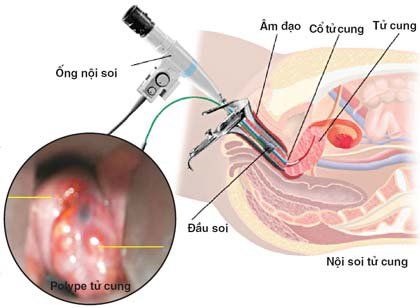
Nội soi buồng tử cung giúp chẩn đoán nhiều bệnh lý tại cơ quan này
2. Purpose of hysteroscopy
Observe the entire surface of the vagina, uterus and 2 fallopian tubes. Evaluation of abnormal lesions inside the uterine cavity. Determine the cause of bleeding, menorrhagia, and menstrual obstruction. Diagnosis of diseases: uterine fibroids, uterine polyps, metritis Find out the causes of gynecological diseases: infertility, multiple miscarriages, metritis, cervical cancer, vaginal cancer, genital warts... Biopsy of the uterus as a specimen. Insert IUD, remove IUD when needed3. Who is indicated for hysteroscopy under anesthesia?
Hysteroscopy diagnoses diseases of the uterus such as abnormal vaginal bleeding, infertility, and postmenopausal bleeding. It is difficult for patients to control their airways with a conventional mask.4. Contraindications for hysteroscopy under anesthesia?
Patients with cervical stenosis or pregnant. The patient did not agree to general anesthesia. Medical facilities do not have enough equipment for anesthesia and resuscitation Anesthesiologists have not been trained in endotracheal anesthesia techniques.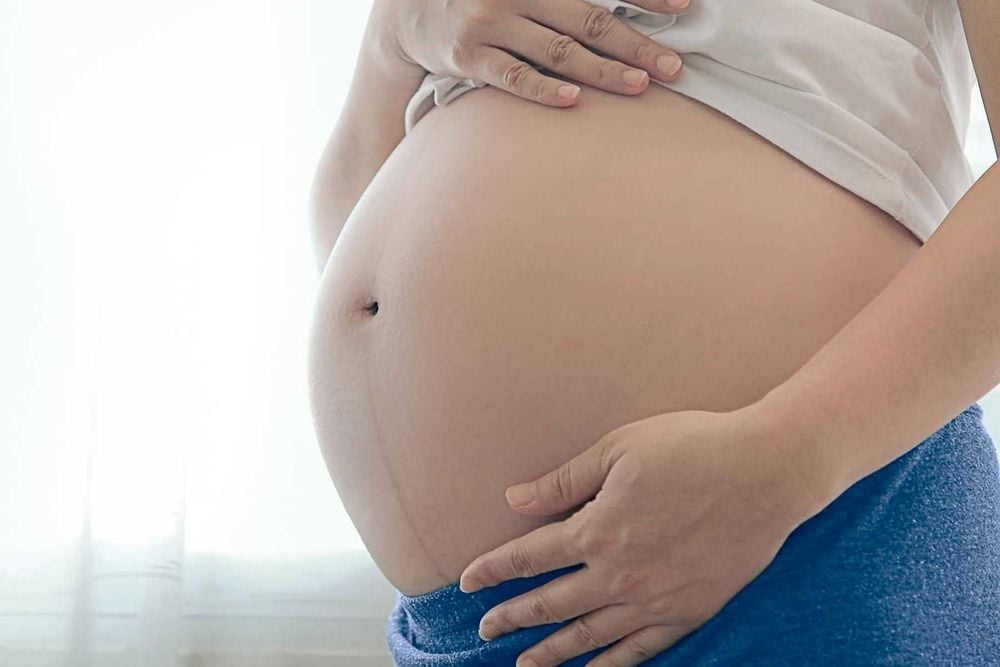
Bệnh nhân mang thai chống chỉ định thực hiện thủ thuật này
5. Hysteroscopy procedure under general anesthesia
The patient's supine position was supported with respiratory support by breathing oxygen through the nose 3-6 l/min at least 5 minutes before induction of anesthesia.Patient should be monitored for vital signs such as blood pressure, heart rate, SpO2 breathing before and during hysteroscopy diagnosed with general anesthesia
Patient can be pre-anesthetized with fentanyl 100mcg and midazolam 2mcg.
Initiating anesthesia Using intravenous anesthetics such as propofol, etomidate, thiopental, ketamine... or volatile anesthetics such as sevoflurane, Isoflurane... Painkillers: fentanyl, sulfentanil, morphine... Muscle relaxants (if necessary) such as succinylcholine, rocuronium, vecuronium... Conduct intubation Condition the patient has been given deep enough anesthesia, enough muscle relaxation. Oral intubation technique Open the mouth, insert the laryngoscope from the right side of the mouth, slide the tongue to the left, push the light deep into the oral cavity to find the position of the epiglottis and glottis. After observing the glottis, the endotracheal tube is gently inserted until the balloon of the endotracheal tube passes 2-3 cm through the vocal cords, then stops. Check the tube for tracheal intubation by listening for lung sounds when endotracheal balloon is inflated. Gently withdraw the laryngoscope and inflate the endotracheal tube to secure the endotracheal tube. Fixed externally with adhesive tape to prevent endotracheal intubation. slip off. Place the airway in the mouth to avoid biting the tube in most cases.

Kỹ thuật đặt nội khí quản đường miệng
6. Some complications of hysteroscopy under general anesthesia
6.1 Reflux of gastric juice into the respiratory tract
During hysteroscopy, under anesthesia, fluid from the digestive tract can enter the airways. This is a dangerous complication, causing aspiration pneumonia after endoscopy. Treatment is by vacuuming as soon as fluid is detected, placing the patient's head down and tilting the head to the side.
Trào ngược dịch dạ dày có thể xảy ra khi nội soi buồng tử cung dưới gây mê toàn thân
6.2 Damage to the lining of the uterus
In the process of inserting the hysteroscope into the uterus, it can cause rubbing and damage to the uterine lining. The way to limit this complication is gentle manipulation, the bronchoscope must be soft and sufficiently lubricated.6.3 Uterine perforation
This is an extremely serious complication that greatly affects the patient's health. When uterine perforation is suspected, the diagnostic hysteroscopy procedure should be stopped immediately and laparoscopy should be performed to assess the damage of the uterine perforation and treat accordingly. In many cases the uterus can be preserved.
Thủng tử cung là một tai biến có thể xảy ra khi nội soi buồng tử cung chẩn đoán
6.4 Cyclic overload
Complications of circulatory overload when diagnosed by hysteroscopy occur because the pumped fluid stretches the uterine cavity and will enter the blood vessels. To avoid this complication, surgery should not take too long (over 30 minutes), must control the amount of fluid in and out, use a dedicated continuous suction pumpVinmec International General Hospital is a quality medical facility. quality in Vietnam with a team of highly qualified, well-trained and experienced doctors and nurses in the country and abroad.
A system of modern and advanced medical equipment, possessing many of the best machines in the world, helping to detect many difficult and dangerous diseases in a short time, supporting the diagnosis and treatment of doctors the most effective. The hospital space is designed according to 5-star hotel standards, giving patients comfort, friendliness and peace of mind.
Master. Dr. Ton That Quang has more than 15 years of experience working in the Anesthesia - Resuscitation industry. Doctor Quang was a doctor at the Department of Anesthesiology and Resuscitation at Khanh Hoa General Hospital and a lecturer at the provincial level of Emergency Resuscitation in Obstetrics and Gynecology before being an Anesthesiologist and Resuscitation Doctor at the Department of General Surgery, General Hospital. Vinmec Nha Trang International.
To register for an examination at Vinmec International General Hospital, you can contact the nationwide Vinmec Health System Hotline, or register online HERE.






